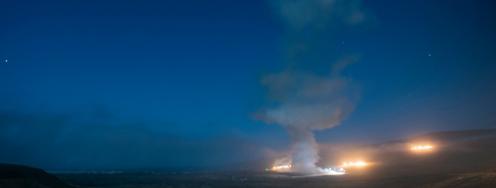Sub Fleet Shows Room for Reductions and Budget Savings
On the radar: Declining patrols, too many subs; DoD’s missile estimate; Perspectives on Iran; Red line update; “The Prophets of Oak Ridge;” Reconversion and breakout; Tired dogs; and Hairless cats that look like Putin.
On the radar: Declining patrols, too many subs; DoD’s missile estimate; Perspectives on Iran; Red line update; “The Prophets of Oak Ridge;” Reconversion and breakout; Tired dogs; and Hairless cats that look like Putin.
April 30, 2013 | Edited by Benjamin Loehrke and Alyssa Demus
Bloated boomers - Over the past decade, the number of deterrent patrols that each U.S. ballistic missile submarine (SSBNs) conducted has declined dramatically. And yet, the fleet of SSBNs has remained at 14 boats. The “significant reduction in SSBN deterrent patrols...suggests that the U.S. Navy currently operates more SSBNs than are needed,” concludes Hans Kristensen of the Federation of American Scientists at FAS Strategic Security.
--”The declining deterrent patrols, combined with a decision to reduce the number of sea-launched ballistic missiles by a third over the next two decades without reduced targeting requirements, indicate that the current SSBN posture is bloated and in excess of national security needs,” writes Kristensen.
--The Navy plans to build 12 new submarines at an aspirational $5.5 billion per boat. Given the reducing deterrent requirements and patrols, “the navy could easily cut the SSBN fleet from 14 to 12 boats now and reduce the requirement for the next-generation SSBN from 12 to 10 boats and save billions of dollars in the process.” Full post here. http://owl.li/kzfo1
Worst case missile estimates - A Department of Defense report released last week concluded “with sufficient foreign assistance, Iran may be technically capable of flight testing and [ICBM] capable of reaching the [US] by 2015.” Some have said this assessment contradicts earlier reports that question the 2015 timeline. Laura Grego at All Things Nuclear questions whether the new report really is a contradiction - probably not, she concludes.
--Why? The Pentagon’s assessments assume “the best conditions - in this case, ‘sufficient foreign assistance.’ To those accustomed to thinking in math terms, the Pentagon appears to be giving the ‘lower bound’ of when Iran might achieve ICBM capability, not assessing the most likely value,” writes Grego. Full post here. http://owl.li/kz4m4
Welcome to Early Warning - Subscribe to our morning email or follow us on twitter.
--Have a tip or feedback for the editor? Email earlywarning@ploughshares.org earlywarning@ploughshares.org. Want to support this work? Click here.
Dealing with Iran - “Diplomacy, Sanctions And A Nearing Red Line With Iran.” Jessica Matthews, David Sanger and Matthew Kroenig talk Iran policy with NPR’s Neal Conan.
--Takeaways: the last round of talks produced “procedural advances” but “on substance there seems to be no shift whatsoever.” Sanctions, by themselves, don’t work. The US needs to make its goals more clear to Iran. It must clarify which sanctions it would be willing to lift “in exchange for action on the Iranian side...Unless we’re prepared to deal on our side, we’re not going to get anywhere.” Listen to the full story here. http://owl.li/kz89w
Red line update - “Israeli leader says Iran has not yet crossed nuclear weapons ‘red line’” from AP. http://wapo.st/100F8oY
Longform - “Last summer, in the dead of night, three peace activists penetrated the exterior of Y-12 in Tennessee, supposedly one of the most secure nuclear-weapons facilities in the United States. A drifter, an 82-year-old nun and a house painter. They face trial next week on charges that fall under the sabotage section of the U.S. criminal code. And if they had been terrorists armed with explosives, intent on mass destruction? That nightmare scenario underlies the government’s response to the intrusion. This is the story of two competing worldviews, of conscience vs. court, of fantasy vs. reality, of history vs. the future.”
--Full 9,500-word article: ”The Prophets of Oak Ridge” by Dan Zak in The Washington Post. http://wapo.st/18k0ker
Real headline - “Tired, Poorly Trained Guard Dogs Could Endanger Y-12 Nuclear Arms Site” by Diane Barnes of Global Security Newswire. http://bit.ly/YaLwxd
Breakout and reconversion - Iran has been converting a portion of its 20% enriched uranium stockpile into uranium oxide - slated for use in making reactor fuel. It also serves as a confidence building measure, where Iran voluntarily converts the uranium in a way that would lengthen any dash to a bomb. As Mark Hibbs reminds, Iran has the technical capability to reconvert this uranium oxide into uranium hexafluoride for further enrichment - a process that would take “a few weeks.”
--”The conversion of a portion of Iran’s U3O8 inventory into UF6 and subsequent re-enrichment could in theory be built into any of a number of breakout scenarios,” writes Hibbs. However, the material would likely be under IAEA safeguards and reconversion would run the risk of detection - immediately precipitating a crisis. Detailed analysis at Arms Control Wonk. http://bit.ly/Yb5I1U
Tweet - @nukes_of_hazard: In March interview w/@ForeignPolicy Russia FM Lavrov cited a GAO report saying SM3-IIB missile interceptor wont work. http://t.co/XL3pc2QcnM
Article - “The Pakistani Nuclear Rise: Obama’s Quest for Balance” by Aiden Warren in the Yale Journal of International Affairs. http://bit.ly/15WGKYZ
Tweet - @carnegienpp: In case you missed the event on Iran's nuclear ambitions w. Sadjadpour, Acton, Vaez, Jahan-Parvar here's the summary. ow.ly/kz39y
Nuclear black market - Three men with German-Iranian dual citizenship have been charged with illegally providing Iran with materials needed to build a nuclear reactor. The men, whose “firm produced valves needed for a nuclear reactor’s construction...supplied the parts through front companies in other countries,” reports The Washington Post. Full story here. http://owl.li/kze8m
Tweet - @AFP: US, South Korea wrap up joint military drills that infuriated North Korea, raising hopes for easing of tensions. http://bit.ly/12MorBG
Events:
--"After North Korea’s Third Nuclear Test: Challenges for the U.S. and Its Regional Allies." Ralph Cossa, Center for Strategic and International Studies. May 1 12:30-2:00pm @ National Defense University, Lincoln Hall, Room 1105.
--"The Nuclear Security Summit in 2014: Challenges and Opportunities." Piet de Klerk, Dutch Foreign Affairs Ministry. May 2 9:00-10:30am @ Carnegie. Details here. http://owl.li/kwTqp
--"Reducing Global Weapons Dangers: Bolstering the NPT and Building the New ATT Regime," (Part of the Arms Control Association annual meeting). Ellen Tauscher and six other speakers. May 6 9:00-1:30am @ Carnegie, Root Room. Details Here. http://owl.li/kwU8t
--Senate floor vote on the nomination of Ernie Moniz to be Energy Secretary. Week of May 6. Broadcast and webcast on C-SPAN2 here. http://owl.li/kwUJ7
Dessert:
Hard-hitting journalism - “14 Hairless Cats That Look Like Vladimir Putin” from Foreign Policy. http://atfp.co/11UJuAG
List - Seven things North Korea is really good at: Building tunnels, Counterfeiting U.S. Dollars, Hacking, Doing more with less, Cheap labor, Massive and coordinated displays of propaganda, and Seafood. Also from Foreign Policy. http://atfp.co/11Ufbu4



